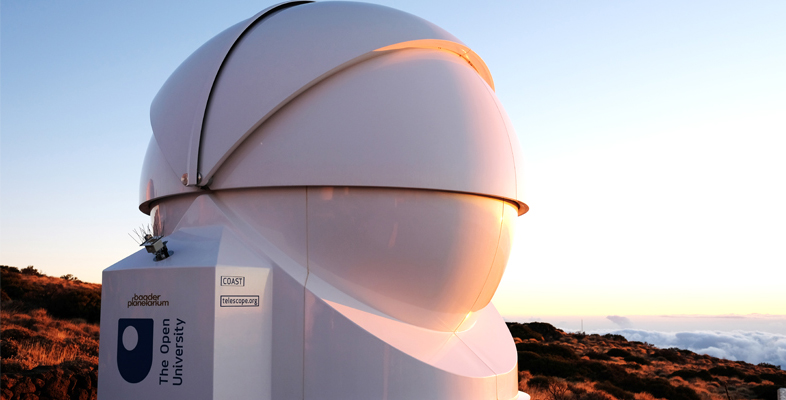Astronomy with an online telescope
Introduction and guidance
The Universe is filled with amazing objects, from stars and planets to distant galaxies, remnants of dead stars, and places where new stars and new solar systems are being formed. In this badged course, Astronomy with an online telescope, you will learn about some of these celestial objects and have the opportunity to take spectacular images using the remotely-operated COAST telescope facility in Tenerife. You will find out how telescopes and astronomical imaging equipment works, and learn how to get the most out of your own night-adapted vision. Finally, you will use your new skills to make scientific measurements of variable stars.
The course lasts 24 hours, with 8 ‘weeks’ of study. You can work through the weeks at your own pace, so if you have more time one week there is no problem with pushing on to complete a further study week. The eight weeks are linked to ensure a logical flow through the course and it will develop your confidence and skills for online study, whether this is to explore similar topics or part of your preparation for other study.
There will be weekly interactive quizzes, of which Weeks 4 and 8 will provide you with an opportunity to earn a badge to demonstrate your new skills. You can read more on how to study the course and about badges in the next sections.
After completing this course, you will be able to:
- understand how the apparent motion of the night sky is caused by the rotation of the Earth and the movement of the Earth in its orbit around the Sun
- understand how the human eye adapts to dark conditions and how to use dark adapted vision to its best effect when observing the night sky
- have an understanding of the different types of telescopes and the advantages of an observatory location at a remote site such as Tenerife
- understand how the positions of celestial objects are specified and be able to use this knowledge to predict when a given object will be visible in order to plan observations and make and collect images from the COAST telescope in Tenerife
- understand the processes by which stars shine and how they evolve and the causes of variability in stars.
Moving around the course
In the ‘Summary’ at the end of each week, you will find a link to the next week. If at any time you want to return to the start of the course, click on ‘Full course description’. From here you can navigate to any part of the course.
It’s also good practice, if you access a link from within a course page (including links to the quizzes), to open it in a new window or tab. That way you can easily return to where you’ve come from without having to use the back button on your browser.
The Open University would really appreciate a few minutes of your time to tell us about yourself and your expectations for the course before you begin, in our optional start-of-course survey [Tip: hold Ctrl and click a link to open it in a new tab. (Hide tip)] . Participation will be completely confidential and we will not pass on your details to others.
